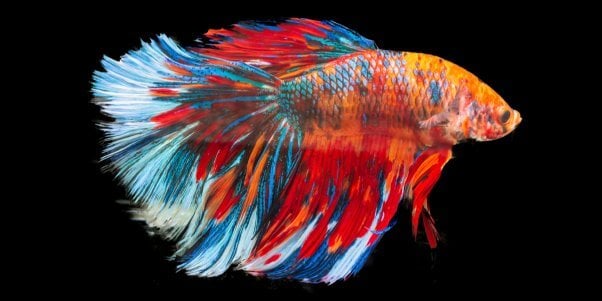How to Introduce Betta Fish to an Area Tank Safely
How to Introduce Betta Fish to an Area Tank Safely
Blog Article
Exactly How to Breed Betta Fish Efficiently: Expert Methods and Insights for Hobbyists Seeking To Increase Their Betta Collection
Reproducing Betta fish needs a nuanced understanding of genes and environmental conditions, making it vital for enthusiasts to come close to the procedure with both diligence and care. Producing an optimal breeding setting, selecting the best sets, and observing the details of their courtship actions are foundational actions that can considerably impact the result.
Comprehending Betta Fish Genes
Understanding the genes of Betta fish is crucial for effective breeding, as it affects attributes such as color, fin shape, and actions. Betta fish exhibit a diverse variety of colors and patterns, mostly figured out by their hereditary make-up. The primary genes liable for coloration include the "B" genetics for blue, "D" gene for red, and the "C" gene for color strength. Breeders can manipulate these characteristics by selecting particular moms and dad fish that show preferred qualities.
In enhancement to coloration, fin morphology is another substantial aspect of Betta genes (betta fish). The sizes and shape of fins are affected by different genetics, consisting of those that establish whether the fins are brief, long, or veil-shaped. Recognizing these hereditary variants aids dog breeders predict the phenotypic end results of their children
In addition, behavior qualities such as aggression and territoriality can likewise be influenced by genetics. These habits play a crucial duty in the breeding procedure, as they can affect spawning success and the general temperament of the resulting fry. By thoroughly recognizing these hereditary principles, dog breeders can make enlightened decisions, ultimately boosting their reproduction programs and attaining preferable outcomes.
Preparing the Reproduction Setting
Creating an ideal breeding environment is important for the effective reproduction of Betta fish. The initial step in preparing this setting is to select a suitable breeding storage tank, preferably varying from 5 to 10 gallons.
Following, take into consideration using a sponge filter or an air stone to supply gentle water circulation without creating solid currents that can emphasize the fish. It is necessary to mount plants or reproducing cones to supply hiding spots and promote comfort for the female during the spawning procedure. Floating plants, such as Java moss or water sprite, can also create a much more natural surroundings while assisting in bubble nest building by the man.
Prior to presenting the breeding sets, guarantee the water is conditioned and without harmful chemicals, such as chlorine or hefty metals. betta fish. Regular water modifications need to be carried out to preserve optimum water quality, improving the opportunities of successful breeding. With these prep work in location, the reproducing atmosphere will support the health and well-being of both Betta fish
Selecting Reproduction Pairs
Selecting the ideal breeding pairs is important for attaining effective Betta fish recreation. Healthy Betta fish show dynamic colors, clear eyes, and active actions.
Personality is one more vital consideration, as Betta fish are known for their hostile nature. It is advisable to choose a man and woman that display suitable personalities to lessen anxiety during the reproducing process. A tranquil man can motivate a smoother courtship, while a female that is also hostile might disrupt the procedure.
Hereditary history additionally plays a considerable duty in the top quality of the offspring. Reproducing fish that are genetically varied can minimize the risk of hereditary wellness issues and improve the general vigor of the fry. It is valuable to look into the family tree of both the man and woman, concentrating on desirable characteristics such as fin type, color patterns, and size.
The Breeding Process
The breeding procedure of Betta fish needs mindful planning and interest to detail to ensure an effective end result. It is important to prepare an appropriate reproduction container, ideally a 5-10 gallon aquarium with a temperature level kept at 78-80 ° F. The storage tank needs to be furnished with a heating unit, filter (ideally sponge kind to prevent strong currents), and lots of water plants for the lady to hide.
Once the atmosphere is established, present the selected breeding pair to the tank, enabling them to adapt. Observe their habits; the male will certainly present fancy courtship rituals, consisting of flaring his fins and developing a bubble nest. If the lady more tips here reveals interest, she will show vertical stripes showing preparedness for spawning.
When the female is receptive, the set will engage in a mating accept, during which the male fertilizes the eggs. Keeping optimal water conditions during this duration is vital for the development of healthy Betta fry.
Caring for Betta Fry

Feeding Betta fry is vital, as they require a diet regimen high in protein. At first, they can be fed infusoria or liquid fry food, transitioning to carefully smashed high-grade pellets as they expand. Feed small sections numerous times a day to encourage healthy and balanced growth without overloading the container with leftover food.

As they grow, monitor their growth closely and divide any kind of hostile individuals to avoid harm. By offering a supporting atmosphere and appropriate nutrition, hobbyists can effectively raise Betta fry into vivid, healthy and balanced fish, ultimately boosting their Our site breeding undertakings.
Final Thought
Effective Betta fish reproduction requires thorough interest to genetic selection, ecological problems, and look after the fry. By recognizing the genes of Betta fish and preparing a suitable reproduction setting, hobbyists can improve the opportunities of producing dynamic, healthy and balanced spawn. Selecting compatible breeding pairs and very closely checking the courtship and spawning processes are crucial. Giving optimal treatment for the fry ensures their healthy and balanced advancement, contributing to a thriving Betta collection.
Report this page